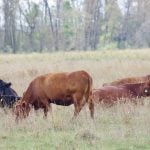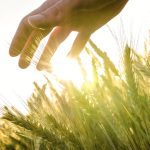
Comment

Comment: The optimal land use breakdown – in theory
Outside any societal factors, what would the world look like if we allocated land ideally?

Comment: Farmers the victims of food company decarbonization
Farmers are bearing the brunt of big food companies’ decarbonization efforts. Here’s why

Comment: ‘New deal’ does not mean good deal for Canadian agriculture
Research funding has changed a lot in the last 20 years, and not necessarily for the better

Comment: We must respect Mexico’s food sovereignty
Mexico has a right to determine its corn policy, even if the U.S. and Canada don’t like it

Comment: How the food subsidy system is failing northern Canada
Grocery retailers are benefiting from food subsidies and that’s a problem

Comment: Australia has officially given up on eradicating varroa mite. Now what?
Australia has, until recently, held the line against the endemic headache faced by North American beekeepers
Comment: The rules keep changing on Crown land
Changes from the old community-based allocation system equate to flexible red tape
CROWN LAND Changes from the old community-based allocation system equate to flexible red tape
In 2018, the provincial Progressive Conservatives began instituting new regulations under the Crown Lands Amendment Act, in response to a request from the Manitoba Beef Producers who, in 2017, asked for the agricultural Crown land lease allocation system to be changed from its long-standing community and Manitoba farmer-centred points-based system to a pure auction system.
COVID-19 isn’t over for white-tailed deer
The virus mutates rapidly in white-tailed deer, but here’s why we don’t need to worry — for now

Comment: Why the proposed changes to Ontario’s Greenbelt matter
The Greenbelt is a haven for farmland and ecosystem services and it’s worth protecting

Cropping with wonky weather
It’s time to start farming in a way that can absorb weather curve balls


